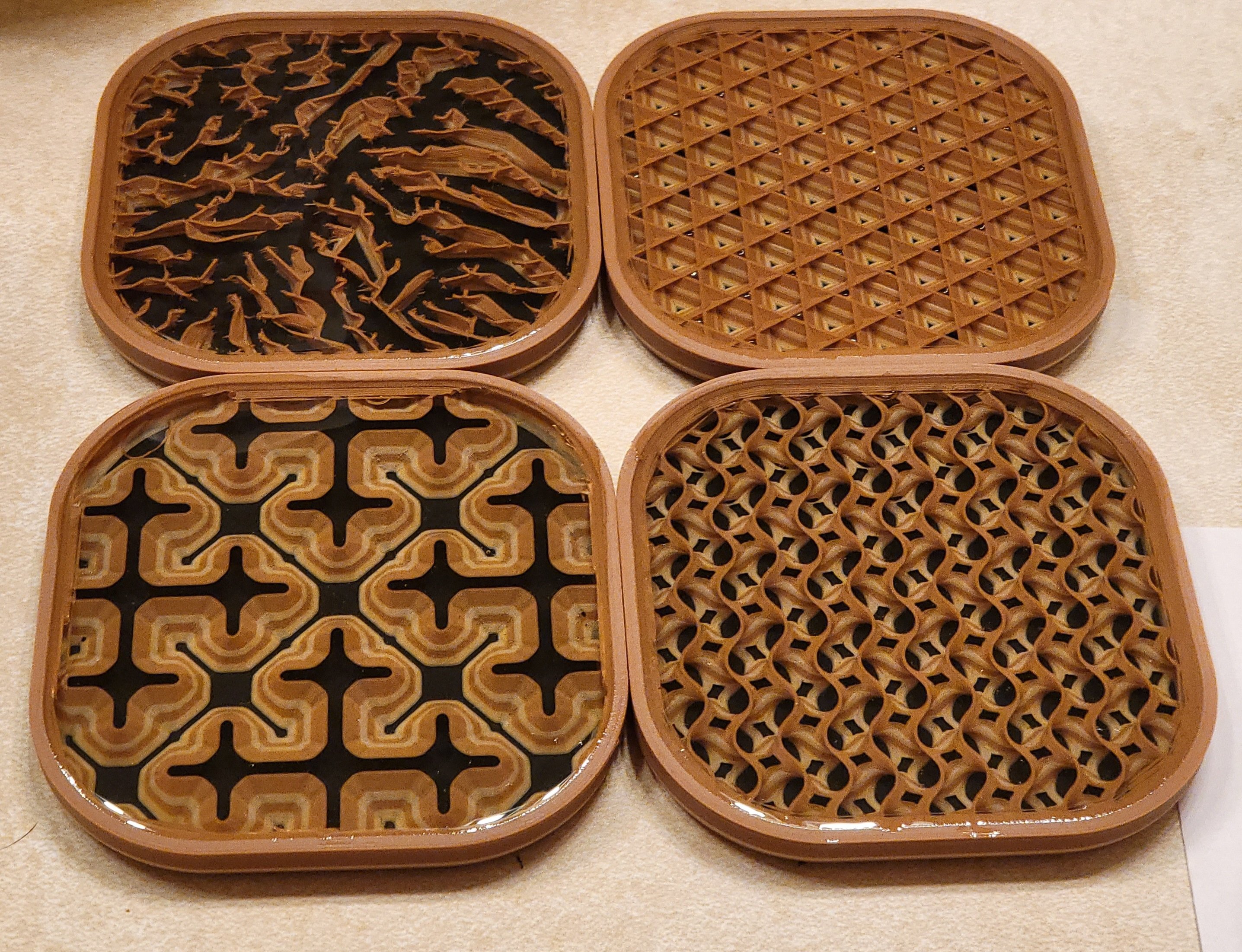I’ve been using gyroid infil almost exclusively since I first tried it.
I was using cubic before, which was fine, but gyroid seems much sturdier for the same % infil even if it does take a bit more print time.
Also it looks awesome.
I can hear the noise my printer makes in my head just looking at this picture
wooo wabble waddle waddle wooo
Wuewuewuewuewue…
Here is an alternative Piped link(s): https://piped.video/watch?v=QKj0xzFF_xk
Piped is a privacy-respecting open-source alternative frontend to YouTube.
I’m open-source, check me out at GitHub.
Here is an alternative Piped link(s): https://piped.video/watch?v=v4xZUr0BEfE
Piped is a privacy-respecting open-source alternative frontend to YouTube.
I’m open-source, check me out at GitHub.
Hehe yeah. So awesome! Its freaking therapy for my brain
It’s like a little dance for every layer
until you start going fast then it sounds like it’s just gonna break half the damn timw
It’s Prusa’s favourite for a reason. I like the look a lot so that combined with it being strong and non-crossing is why I use it.
I just wish it didn’t take so much longer to print than adaptive cubic at the same infill percent.
Is adaptive cubic different than cubic?
cubic and gyroid seem to take the same time while having almost the same failure load
Yes, adaptive cubic varies the density of the cubic structure to decrease filament usage while supposedly maintaining the same strength as normal cubic. And, in my own experience, gyroid always takes longer to print than adaptive cubic – sometimes it only adds a few minutes, but I’ve seen it add nearly half of the print time again for infill-heavy prints.
Here is an alternative Piped link(s): https://piped.video/watch?v=upELI0HmzHc&
Piped is a privacy-respecting open-source alternative frontend to YouTube.
I’m open-source, check me out at GitHub.
True, although the idea is to print significantly less of it because of how sturdy it is.
Same. Sometimes you want something fast. For things that don’t need to be sturdy at all (little display figures and stuff like that) I’ll use cubic or even lightning infil
You could also just use a lower infill percentage since it’s stronger
There’s a type of cubic that starts out lower and increases in density as it reaches the top to support the top layers. That’s mainly the one I was thinking of. I can’t remember the name of it though. And lightning is suuuper fast but provides basically no strength
That’s all I use similar strength in every direction low material use and ease of print (it’s waves but no sharp corners so easy on the printer’s acceleration.
Yeah I do like that it doesn’t jerk the printer, just a little wiggle!
same journey for me, cubic then gyroid.
I love the way it looks so much I made some coasters using gyroid infill with no top layers, and filled it with resin. such a cool pattern
I even made a vent cover with it since it lets air through still and looks cool
That’s a cool idea for the coaster! I might do that if I ever get into pouring resin
Thanks! It’s fun to mix both skills into one project.
Here is how they turned out

Those look great! What is the top left one?
Lightning infill from Cura
I thought so but I’ve only ever used it on taller TPU prints where I want them to basically be hollow so I’ve never seen it look quite like that!
fairly high infil percentage if I remember correctly. I did 20% first and it was very sparse
I like it, but sometimes I have to use something like concentric for thinner pieces. But in general, it is pretty neat.
I haven’t had a use case where something is too thin for gyroid yet. I can definitely see that being useful though!
Did you probably happen to compare it to 3d honeycomb? Quite pleased with that meself.
I haven’t tried that one yet. I don’t see that one in Cura - is that in prusa slicer?
It’s available in the Prusa Slicer
The only advantage 3d honeycomb has is speed.
3dh Is directional, has stress points, and has less fluid transitions between changing layers.
Unless you’re absolutely in a hurry, it’s easily the best infill.
That is literally its biggest disandadvantage lol.
https://www.youtube.com/watch?v=upELI0HmzHc&t=417
3D honeycomb is insanely slow. It takes like double or triple the time and is super stressful on the printer because of very high accelerations.
Pretty much its only use of honeycomb seems to be making the absolute strongest prints in compression strength. 3D honeycomb is slightly better, but it is essentially the master of none. Line and rectilinear have the best surface, cubic and gyroid have the best transverse strength. Triangle has as good of compression strength and transverse strength as honeycomb and better than 3D honeycomb while taking a fraction of the time to print.
Honeycomb is probably one of the worst “popular” infills.
Here is an alternative Piped link(s): https://piped.video/watch?v=upELI0HmzHc&
Piped is a privacy-respecting open-source alternative frontend to YouTube.
I’m open-source, check me out at GitHub.
https://www.youtube.com/watch?v=upELI0HmzHc&t=417
Honeycomb is insanely slow and only strong in 1 direction as opposed to all directions like gyroid. 3D honeycomb isn’t much better.
Here is an alternative Piped link(s): https://piped.video/watch?v=upELI0HmzHc&
Piped is a privacy-respecting open-source alternative frontend to YouTube.
I’m open-source, check me out at GitHub.
I have to find something to print with that - I don’t usually do the slicing, but I’m totally going to use gyroid infill whenever I can. Probably as a feature - like someone else said, make coasters without the top or bottom layer, and use it decoratively. Awesome!
My phone case is gyroid without the bottom layer.
I switched my petg to gyroid after having a hard time with cubic. It works nicely.
This is PETG also - it makes for super sturdy prints.
4 walls 30% gyro infill. Strong as a rock.
Increase the extrusion width on the infil as well- it’ll print the same amount of material, butb juice the strength phenomenally. 150% of default (which is usually at or near nozzle width,) for appearance parts. 200% for strength
That’s a good tip - I haven’t tried that yet. I’ll give it a shot next time I need something sturdy
It also speeds up infill printing (because it takes fewer passes, I’ve found.)
Gyroid is my default infill. I like it.









